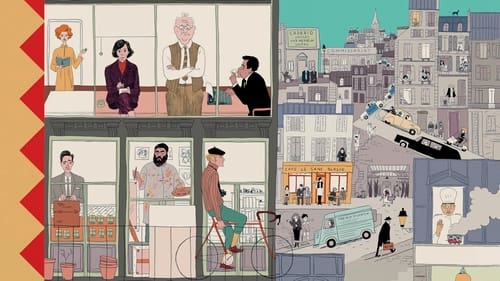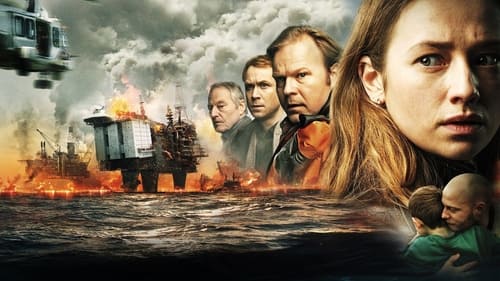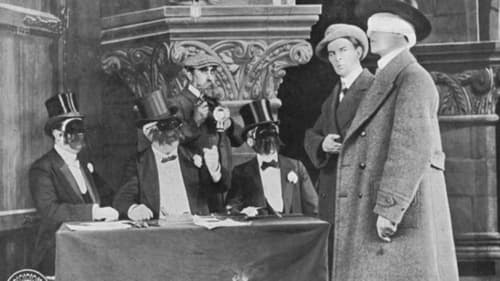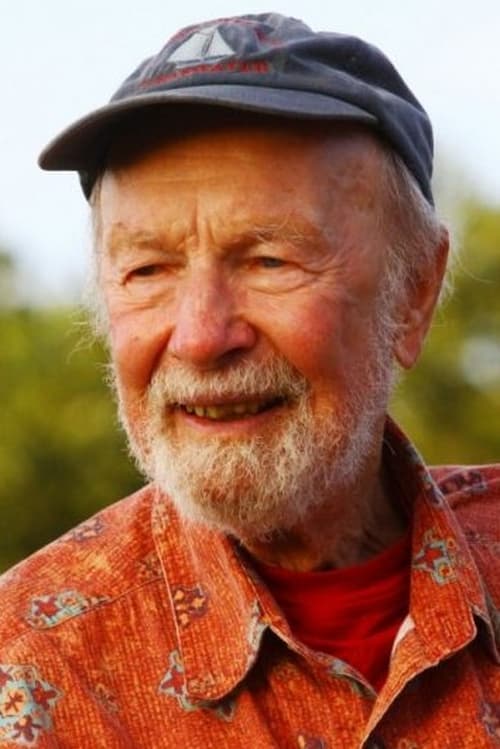Indian Summer (1960)
ジャンル : ドキュメンタリー
上映時間 : 28分
演出 : Jules Schwerin
シノプシス
On the first hot day of summer, an old farmer goes fishing just as he has done for many years on the West Branch of the Delaware River. A young boy, his frequent fishing companion, eagerly takes him to see the first giant bulldozers, which are to begin construction on the Cannonsville Reservoir. In order to provide more water for the cities, the vast project will flood the valley. The old man goes to the general store and walks the length of the valley to talk about his concerns, but most people do not support him. The young people of the valley celebrate at a barn dance. The old man resists eviction with his unloaded flintlock. The next day, he watches as the houses and farms are burned to clear the way. His friend, the fiddler, picks him up and takes him and his few belongings away.

Tells the history and importance of The National Film Registry, a roll call of American cinema treasures that reflects the diversity of film, and indeed the American experience itself.

One day in the life of Anders, a young recovering drug addict, who takes a brief leave from his treatment center to interview for a job and catch up with old friends in Oslo.

Among the pieces featured in Fragments are the final reel of John Ford's The Village Blacksmith (1922) and a glimpse at Emil Jannings in The Way of All Flesh (1927), the only Oscar®-winning performance in a lost film. Fragments also features clips from such lost films as Cleopatra (1917), starring Theda Bara; The Miracle Man (1919), with Lon Chaney; He Comes Up Smiling (1918), starring Douglas Fairbanks; an early lost sound film, Gold Diggers of Broadway (1929), filmed in early Technicolor, and the only color footage of silent star Clara Bow, Red Hair (1928). The program is rounded out with interviews of film preservationists involved in identifying and restoring these films. Also featured is a new interview with Diana Serra Cary, best known as "Baby Peggy", one of the major American child stars of the silent era, who discusses one of the featured fragments, Darling of New York (1923).

A documentary on Cosme Alves Netto (1937-1996), former head of the Cinematheque of the Museum of Modern Arts at Rio de Janeiro.

Three years after his wife, acclaimed photographer Isabelle Reed, dies in a car crash, Gene keeps everyday life going with his shy teenage son, Conrad. A planned exhibition of Isabelle’s photographs prompts Gene's older son, Jonah, to return to the house he grew up in - and for the first time in a very long time, the father and the two brothers are living under the same roof.

In this John Nesbitt's Passing Parade short, a look is taken at the problems of film preservation efforts in the 1930s and early 1940s.

The staff of an American magazine based in France puts out its last issue, with stories featuring an artist sentenced to life imprisonment, student riots, and a kidnapping resolved by a chef.

This John Nesbitt's Passing Parade series short highlights the film preservation efforts of the Museum of Modern Art in New York. Several scenes from early newsreels are shown.

A group of friends vacation in a cabin close to a lake where local legends say a man disappeared under mysterious circumstances. It's not long until they start feeling the same dark force pulling them closer to the lake.

ヨン・アンドレアス・アナスン監督が手がけたノルウェー発のディザスター・アクション。大規模な海底地滑りによって石油採掘リグが倒壊。流出した原油によって海が燃え上がる中で、さらなる危険が迫ってくるが……。

THE TRAIN is an allegory inspired by current events. There is an ongoing battle between good and evil, and Christianity is now under severe persecution. The film starts in the not-too-distant future in the year 2041 and it pivots between two different timelines. This film illustrates the conflicts as well as the erosion evil powers have created within the Roman Catholic Church. The laity itself becomes the main force holding the church together, as it fights the powers of darkness that takes the lives of Father Michael, Christie and her two daughters, Anna and Mary. The evil "Grandmother" who is the head of an ancient crime syndicate, and hates all of humanity, is desperately trying to get her hands on a vial which contains some droplets of the blood of Christ, now in the possession of Cardinal Langham, who bravely stands up to the communist forces that are chopping Christian's heads off.

Today, the art world and beyond is obsessed with shooting analog. Whether it's a fashion house seeking to bring a new edge to their creative work, an amateur perusing eBay for the perfect vintage Polaroid, or an influencer attempting to capture a comforting retro aesthetic on social media, analog photography has piqued the interest of people everywhere. Is this resurgence a backlash against digital photography? Is it just a trend perpetuated by our desire for authenticity in an increasingly superficial world? Or is it something else entirely?
Grain: Analog Renaissance is a documentary by Alex Contell and Tommaso Sacconi that explores the stories of those committed to using film in modern day photography.

Signe and Thomas are in an unhealthy, competitive relationship that takes a vicious turn when Thomas suddenly breaks through as a contemporary artist. In response, Signe makes a desperate attempt to regain her status by creating a new persona hell-bent on attracting attention and sympathy.

Stacey is a young mother trapped in a violent marriage who wants to see her daughter as Cinderella in the school play but must first escape the nightmare of her own Prince Charming.

With the aid of usb microscopes and X-ray scanners, this is the first of many test films, peering into the surface structure of decayed and rotted 35 mm celluloid film. Thank you Brian Eno for the music.

Through the entanglement of home videos, archival footage, and cinéma vérité, I Am Corn Puffians: Ghost Camera seizes 116 years of Toronto history to tell the tale of a documentarian's descent into artistic madness.

Some Things Hidden (2020) is an experiment in rhythmic succession of still images to create illusions of movement through space in an altered time. The film documents a day with the artist and his parents on a hike through active bear country, beneath the Grand Tetons in Wyoming using a hand cranked 35mm movie camera.

During the 1920's, Augusto San Miguel (1905-1937) directed, produced and starred in the first feature films made in Ecuador. Unfortunately, San Miguel's films -like many episodes of his life- disappeared in time. The only remains are the movie ads on old newspapers and a mysterious legend, by which San Miguel was buried with his films.

A 3 Part Collection of More Than 75 Early Films by Alice Guy, Louis Feuillade and Léonce Perret. The invention of cinema—and its growth into a sophisticated art form—are vividly brought to life in this massive collection of films from the early years of the influential Gaumont Film Company. Each disc is devoted to one of Gaumont’s artistic directors, who oversaw all film production at the studio, and profoundly influenced not only the identity of the studio but also the evolution of the cinema itself.

An exploration into the world of someone's psyche and how they find the words to explain the way they are viewing the world around them.














